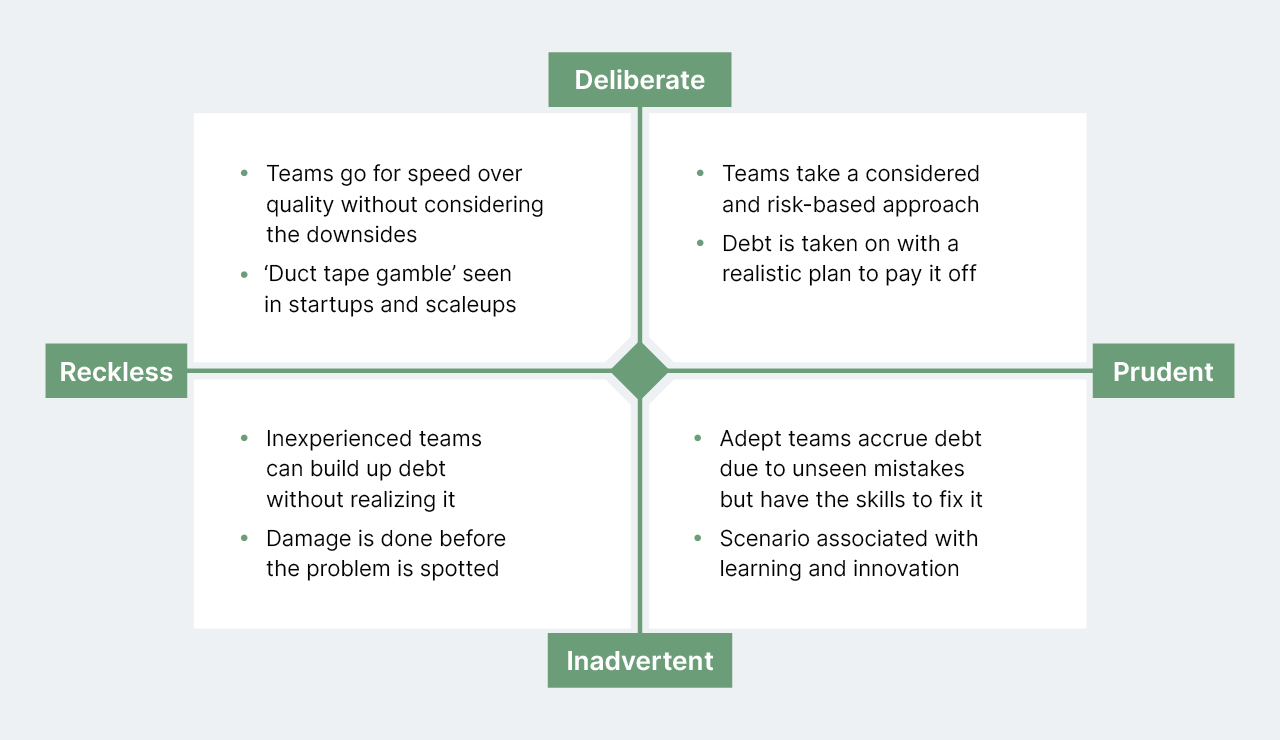Save a copy of the infographic
Tech debt is a term widely used to describe an organization’s under-investment in the software it relies upon.
Types of technical debt


Five ways tech debt can compromise your business

Customer experience
New features aren’t added as tech debt slows making basic changes, as well as innovation. Customers get frustrated when unexpected events cause systems to fail.

Operational costs
Outdated tech causes delays and increases operational costs. Outage responses and remediation incur costs. Productivity and engineering effectiveness suffer.

Revenue leakage
Manual processes, quick fixes and human error rise with tech debt. Customer data gets siloed in different systems, making it harder to leverage insights.

Talent retention
Developers generally don’t want to spend their careers maintaining broken systems. Less tech debt means your talent is driving value instead.

Brand reputation
Outages dent reputations, as does an inability to innovate at speed. Tech debt also reduces resilience to cyber attacks and data leaks.
Tackling tech debt

Listen to your developers.
They are up close to day-to-day tech debt problems and the broader risks

Listen to your customers.
Glitches they find may signal deeper problems, make leadership aware

Watch for rising costs and delays. Tech debt can be an underlying cause, or exacerbate them

Measure it. Deployment lag and longer developer onboarding times can be indicators

Prioritize based on risk.
A forum for business and tech leaders to discuss will help

Empower engineering teams.
Trust them to fix problems and stop new ones

Culture of continuous improvement. Approach code and dev support with the right mindset

Align your business and tech strategies. Disconnect drives tech debt, alignment brings efficiencies
















